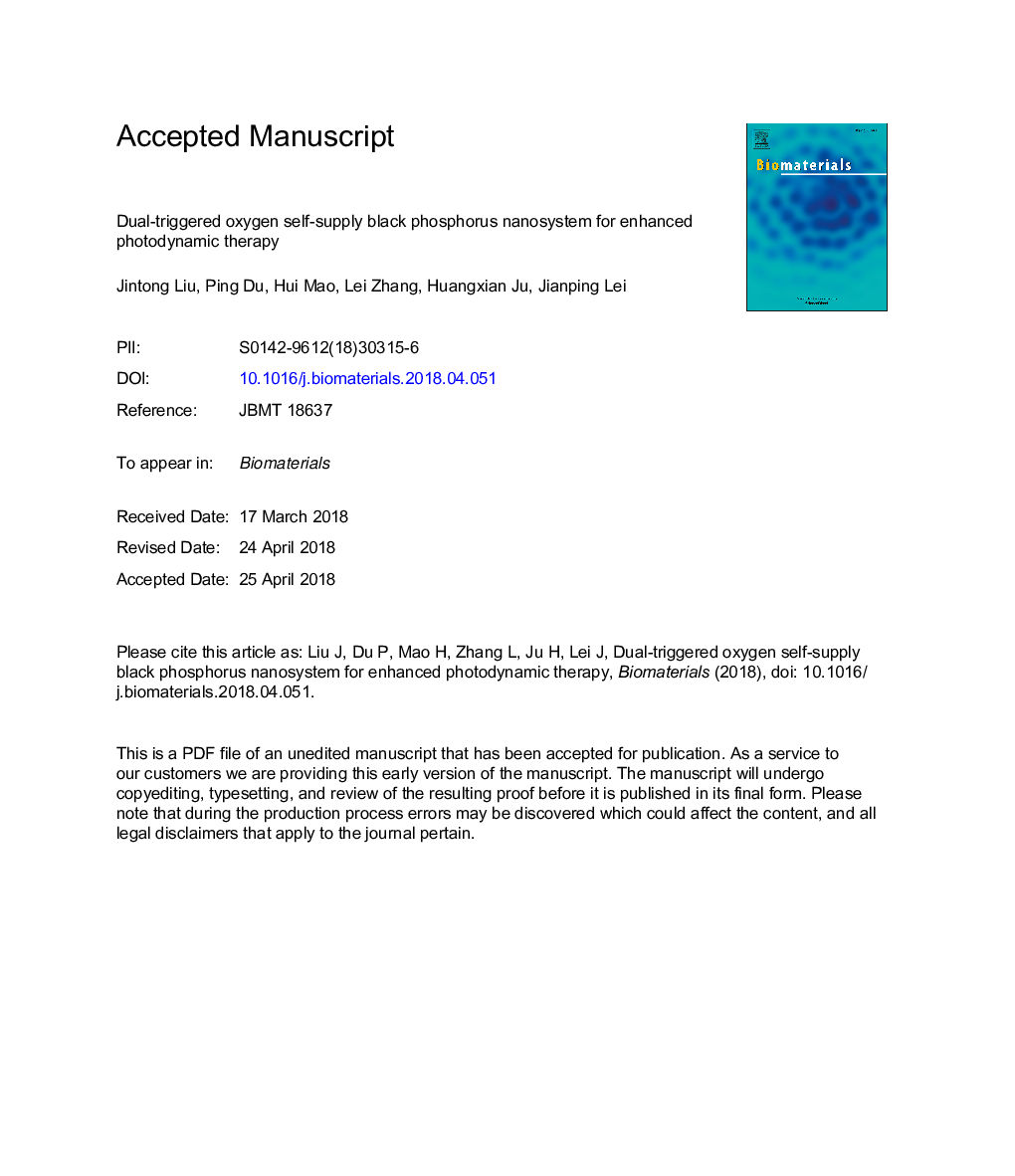| Article ID | Journal | Published Year | Pages | File Type |
|---|---|---|---|---|
| 6484483 | Biomaterials | 2018 | 29 Pages |
Abstract
Nonspecific distribution of photosensitizer and the intrinsic hypoxic condition in the tumor microenvironment are two key factors limiting the efficacy of O2-dependent photodynamic therapy (PDT). Herein, a dual-triggered oxygen self-supported nanosystem using black phosphorus nanosheet (BPNS) as both photosensitizer and nanocarrier was developed to enhance PDT for tumors within hypoxic microenvironment. The BPNS platform was functionalized with folate and a blocker DNA duplex of 5â²-Cy5-aptamer-heme/3â²-heme labeled oligonucleotides. The resulting heme dimer could passivate its peroxidase activity. After specific recognition of aptamer-target, the quenched fluorescence is “turned” on by cellular adenosine triphosphate. The passivated nanosystem then activates the catalytic function towards excessive intracellular H2O2 to generate O2 essential to sustain BPNS-mediated PDT, leading to 8.7-fold and 7.5-fold increase of PDT efficacy in treating the hypoxic cell and tumor, respectively. Therefore, the dual-triggered oxygen self-supply nanosystem not only exerts tumor microenvironment-associated stimulus for enhanced PDT but also surmounts hypoxia-associated therapy resistance.
Related Topics
Physical Sciences and Engineering
Chemical Engineering
Bioengineering
Authors
Jintong Liu, Ping Du, Hui Mao, Lei Zhang, Huangxian Ju, Jianping Lei,
